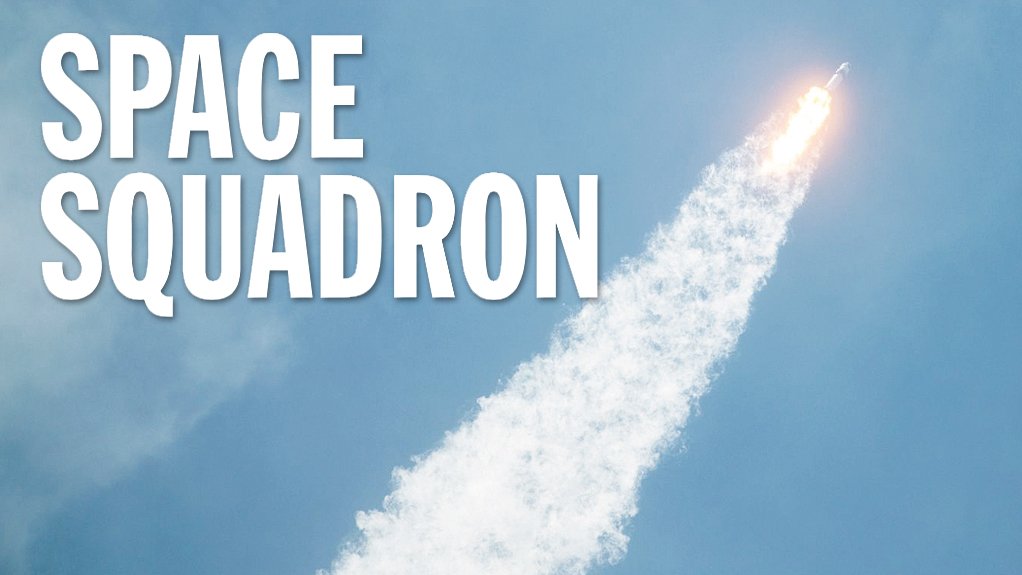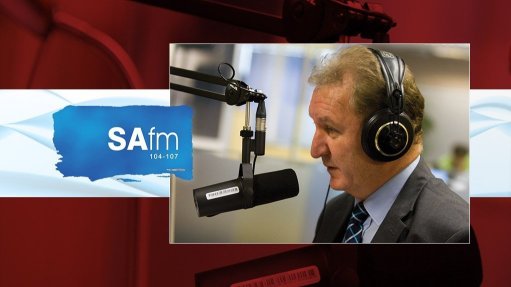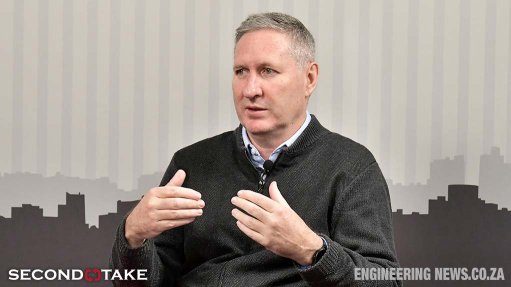South Africa has just deployed its first truly operational satellites


On Thursday, January 13, 2022, a Falcon 9 rocket, designed, developed, assembled and operated by renowned company SpaceX, founded and spearheaded by South African-born entrepreneur and engineer Elon Musk, lifted off from the Cape Canaveral Space Force Station, in the US state of Florida. Its payload was 105 small spacecraft, ranging from CubeSats to orbital transfer vehicles. The mission was well-covered in South Africa, for three of the CubeSats were South African. “This will further cement South Africa’s position as an African leader in small satellite development, and help the country capture a valuable share of a niche market in the fast-growing global satellite value chain,” enthused Higher Education, Science and Innovation Minister Dr Blade Nzimande in a statement released before the launch.
The three CubeSats were designed and built at the Cape Peninsula University of Technology (CPUT), in Cape Town. “This was the biggest [CPUT] satellite project to date [and] there are many other projects in the pipeline. So I say watch this ‘space’”, punned CPUT vice-chancellor Professor Chris Nhlapo, following the successful launch and deployment of the little spacecraft. “We are a university of technology and we must dominate in the applied science space; our research must benefit the people of [South Africa].”
Constellation
CubeSats, more formally designated nanosatellites, are tiny. The very first ones were indeed cubes, measuring 10 cm × 10 cm × 10 cm. It soon became apparent that greater volume would allow these miniature spacecraft to do some serious, albeit limited, research or other missions. So 20 cm × 10 cm × 10 cm versions were developed. Because they were in appearance two cubes stacked one on top of the other, they were called 2U CubeSats. And likewise 30 cm × 10 cm × 10 cm models became 3U CubeSats (even though 2U, 3U and even larger versions are very obviously oblongs, not cubes). Today, the main types employed are the original (now 1U) cube, the 2U, 3U and the 6U.
The three recently launched South African CubeSats are all identical 2U craft. Each has a mass of only 2.1 kg. So why all the excitement? There are several reasons.
“[This is] the first constellation of satellites developed and designed in Africa,” highlighted CPUT acting project chief engineer Nyameko Royi. While other African countries own and operate satellites and even small constellations, they have used spacecraft designed, and in most cases built, elsewhere. Thus, the creation of an indigenous satellite constellation, even if it was composed of nanosatellites, by an African country, was significant for the entire continent. “The more we get people involved in space the better, the more data we extract from space, the better the world. This is a significant milestone for CPUT and South Africa,” he affirmed.
According to the definition used by the International Astronomical Union, “[a] satellite constellation is a number of similar satellites, of a similar type and function, designed to be in similar, complementary orbits for a shared purpose, under shared [ie, the same] control”. Constellation has also been more simply defined as a system of satellites working together to achieve a single purpose. To be pedantic, South Africa’s new system is better described as a mini-constellation. But, constellation or mini-constellation, the country has never operated such a system before, and that is another reason why its deployment is important, for there is much to learn. That is why only three CubeSats were launched, to make that learning process more manageable.
For example, the satellites in a constellation or mini-constellation must be placed in their complementary orbits or manoeuvred into complementary positions in the same orbit, to maximise the coverage – the number of overpasses – of the desired target area or areas. Although CubeSats have (and have to have) attitude control systems, they do not have propulsion systems (they are too small). But while they are, of course, in space, there is still vestigial atmosphere at the heights at which they orbit, which does exert drag on spacecraft (which is why the orbit of the International Space Station continually deteriorates and it must be periodically boosted back into a higher orbit). Mission controllers, by altering the attitude of an oblong CubeSat, can increase or decrease this drag effect, slowing or accelerating its speed, thereby allowing the different satellites (currently close together) to spread out along the orbit. This is part of the constellation commissioning process, which is currently under way and will last a couple of months.
The deployment of the constellation is also an important development for the South African space sector. “It’s a culmination of the efforts and ambitions of the space sector over time,” explained South African National Space Agency (SANSA) Space Engineering Division engineering manager Justin Witten. “Without the earlier satellite projects – SunSat, SumbandilaSat and earlier South African CubeSats – we wouldn’t have been able to have this mission.”
CPUT itself first became involved in the space sector in 2008, pointed out the university’s Engineering and Built Environment Faculty dean Professor Marshall Sheldon. “Each successful development and launch is a paradigm shift away from the traditional space industry norms and we are proud to be at the centre of that,” she affirmed. “Attracting more undergraduate and postgraduate learners to careers in space science will ensure we can continue celebrating future successes.”
Last but very far from least, the launch of this mini-constellation is important because it was not designed or intended to be, as all previous national South African spacecraft effectively were, a technology demonstrator. It is an operational system. The country’s first truly operational spacecraft system.
Operation Phakisa
The development of this CubeSat mini- constellation cost the Department of Science and Innovation R27-million, spread over three years. The technologies employed were developed from those successfully trialled by the ZACUBE-2 technology demonstrator CubeSat, also developed by CPUT, under the aegis of the French South African Institute of Technology and the university’s African Space Innovation Centre (ASIC). (CPUT was also responsible for ZACUBE-1). The mini-constellation’s nanosatellites were again developed by ASIC with the systems engineering support of SANSA Space Engineering. Mission control is provided by CPUT, with SANSA’s Space Operations division able to provide backup, if and when required.
For what end? The name of the constellation is self-explanatory: Maritime Domain Awareness (MDA). Its member spacecraft are designated as MDASats, and as being the MDASat-1 model. The three spacecraft are individually designated MDASat-1a, MDASat-1b and MDASat-1c. They were designed and have been deployed to support government’s Operation Phakisa ‘ocean economy’ initiative and are intended to improve the authorities’ awareness over South Africa’s maritime domain.
As a sovereign State, South Africa has territorial waters extending 12 nautical miles offshore, in which the country exercises total sovereignty. But it also has an exclusive economic zone (EEZ), extending 200 nautical miles offshore, over which it exerts sovereign control of all economic resources (fish, other marine life, seabed and under-seabed resources). South Africa also has rights over undersea economic resources to the edge of the country’s continental shelf (this being the underwater outer edge of a continent). South Africa’s EEZ alone totals some 1 553 000 km2, which is greater than the country’s land area (1 200 000 km2). And this EEZ is rich in proven resources, most obviously fish. But the ability of the South African Air Force, the South African Navy, and the Department of Forestry, Fisheries and the Environment to patrol this huge area is currently decidedly limited.
Space-based technology provides cost- effective assistance in this endeavour. The role of the MDASats is to detect and track shipboard Automatic Identification System (AIS) transponders. AIS is part of the Global Maritime Distress and Safety System and its installation and use is mandatory for all civilian vessels employed on international voyages and which displace more than 300 t, or are employed on non-international routes and displace more than 500 t, as well as for all passenger ships. AIS employs very high frequencies (VHF) to transmit digital data on the vessel: its identity, its type, its location, course, speed and heading.
Consequently, the primary payload of each of the MDASats is an AIS transceiver with its associated software defined radio. This allows the CubeSats to detect AIS transmissions and relay the information to mission control, allowing the tracking of all civilian vessels operating in South Africa’s EEZ and continental shelf areas. Of course, a ship engaged in, or a victim of, criminal activity could switch off its AIS, but it could not risk doing so for an entire voyage, as detection by any country’s naval or air patrols would immediately draw close and very unwanted attention. So normally ships engaged in illegal activities would only switch off their AIS when they were actually breaking the law. However, the sudden disappearance of an AIS signal in or near South African waters would alert the authorities and allow them to dispatch an aircraft or ship to investigate.
“As [the nano-]satellites eventually drift further apart, we’ll have breaks between overpasses and as they eventually spread further apart we will have an average of 12 passes per day,” explained Royi. “We are also still tracking previously launched nanosatellite ZACUBE-2, which makes it 16 tracking operations per day. We expect an average of 1 883 k[ilo] bytes of data to be generated per pass per satellite.”
However, a mini-constellation of three (or even four, if one includes the ZACUBE-2 technology demonstrator, still operational) is, it has been determined, ‘suboptimal’. To provide sufficient coverage a squadron of about nine of the CubeSats would be needed, in three different orbital planes. Once experience has been gained in operating and managing this initial trio, the plan is to launch a second trio (Phase 2 of the programme), followed shortly afterwards by a third trio (Phase 3).
But CubeSats, because of the low orbits they occupy, tend to have short lives and the MDASats have a predicted life of three years. “The plan would result, at a minimum, in a nine-satellite constellation in about two-and-a-half years,” noted Witten. “That would last about six months, but then the first three would deorbit and be replaced. There would be a continuous replacement/replenishment programme, which could see larger nanosatellites developed, for example 3U or 6U models.”
The CubeSats that would form Phase 2 would be based on the MDASat-1 design, but probably improved as a result of operational experience. This second trio would be designated MDASat-2. However, Phase 2 is still awaiting official approval and the requisite funding.
While they are operational spacecraft, the MDASat-1 craft do have an experimental secondary mission. They are testing the feasibility of VHF Data Exchange Services (VDES). The idea of VDES, which is a global initiative, is to transmit additional data through an expanded range of AIS frequencies. South Africa is fully involved in the process of developing and agreeing global standards for VDES.
“To have VDES on a nanosatellite is a cutting-edge development,” highlighted Witten. “The aim is to develop full VDES capability for future nanosatellites, starting with the MDASat-2s.” ![]()
Comments
Announcements
What's On
Subscribe to improve your user experience...
Option 1 (equivalent of R125 a month):
Receive a weekly copy of Creamer Media's Engineering News & Mining Weekly magazine
(print copy for those in South Africa and e-magazine for those outside of South Africa)
Receive daily email newsletters
Access to full search results
Access archive of magazine back copies
Access to Projects in Progress
Access to ONE Research Report of your choice in PDF format
Option 2 (equivalent of R375 a month):
All benefits from Option 1
PLUS
Access to Creamer Media's Research Channel Africa for ALL Research Reports, in PDF format, on various industrial and mining sectors
including Electricity; Water; Energy Transition; Hydrogen; Roads, Rail and Ports; Coal; Gold; Platinum; Battery Metals; etc.
Already a subscriber?
Forgotten your password?
Receive weekly copy of Creamer Media's Engineering News & Mining Weekly magazine (print copy for those in South Africa and e-magazine for those outside of South Africa)
➕
Recieve daily email newsletters
➕
Access to full search results
➕
Access archive of magazine back copies
➕
Access to Projects in Progress
➕
Access to ONE Research Report of your choice in PDF format
RESEARCH CHANNEL AFRICA
R4500 (equivalent of R375 a month)
SUBSCRIBEAll benefits from Option 1
➕
Access to Creamer Media's Research Channel Africa for ALL Research Reports on various industrial and mining sectors, in PDF format, including on:
Electricity
➕
Water
➕
Energy Transition
➕
Hydrogen
➕
Roads, Rail and Ports
➕
Coal
➕
Gold
➕
Platinum
➕
Battery Metals
➕
etc.
Receive all benefits from Option 1 or Option 2 delivered to numerous people at your company
➕
Multiple User names and Passwords for simultaneous log-ins
➕
Intranet integration access to all in your organisation



















